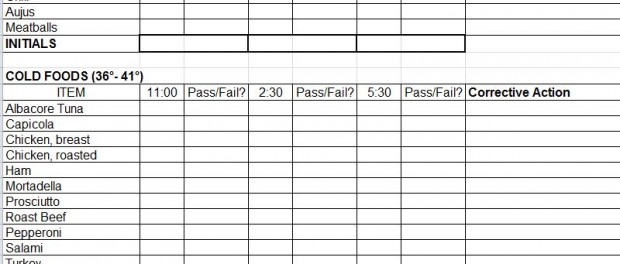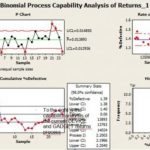
HACCP Checklist Template for Microsoft Excel
This post features an HACCP checklist template for you to download for Microsoft Excel. HACCP or Hazard Analysis Critical Control Point is a food safety standard. HACCP takes the form of a preventive approach in a seven principle framework. In this day and age, ever since several e-coli and listeria outbreaks, HACCP controls have been forefront in ensuring due-diligence with many human safety critical applications in addition to just food safety.
If you need an HACCP checklist template for Microsoft Word or PowerPoint, simply let us know through the contact button above.
The seven principles* to meeting HACCP requirements are:
1. Conduct a hazard analysis
Plans determine the food safety hazards and identify the preventive measures the plan can apply to control these hazards. A food safety hazard is any biological, chemical, or physical property that may cause a food to be unsafe for human consumption.
2. Identify critical control points
A critical control point (CCP) is a point, step, or procedure in a food manufacturing process at which control can be applied and, as a result, a food safety hazard can be prevented, eliminated, or reduced to an acceptable level.
3. Establish critical limits for each critical control point
A critical limit is the maximum or minimum value to which a physical, biological, or chemical hazard must be controlled at a critical control point to prevent, eliminate, or reduce to an acceptable level.
4. Establish critical control point monitoring requirements
Monitoring activities are necessary to ensure that the process is under control at each critical control point. In the United States, the FSIS is requiring that each monitoring procedure and its frequency be listed in the HACCP plan.
5. Establish corrective actions
These are actions to be taken when monitoring indicates a deviation from an established critical limit. The final rule requires a plant’s HACCP plan to identify the corrective actions to be taken if a critical limit is not met. Corrective actions are intended to ensure that no product is injurious to health or otherwise adulterated as a result of the deviation enters commerce.
6. Establish procedures for ensuring the HACCP system is working as intended
HACCP validation ensures that the plants do what they were designed to do; that is, they are successful in ensuring the production of a safe product. Plants will be required to validate their own HACCP plans. Auditors will not approve HACCP plans in advance, but will review them for conformance with the final rule.
Verification ensures the HACCP plan is adequate, that is, working as intended. Verification procedures may include such activities as review of HACCP plans, CCP records, critical limits and microbial sampling and analysis. Auditors will require that the HACCP plan include verification tasks to be performed by plant personnel. Verification tasks would also be performed by auditor.
7. Establish record keeping procedures
The HACCP regulation requires that all plants maintain certain documents, including its hazard analysis and written HACCP plan, and records documenting the monitoring of critical control points, critical limits, verification activities, and the handling of processing deviations.
This concludes our short post about HACCP. Please download the HACCP checklist template from the link below and let us know what you think.
Download “HACCP Checklist for Excel” HACCP-Checklist-Template.xls – Downloaded 2402 times – 32.50 KB*Note – The text of the seven principles is excerpted from Wikipedia.org here




thanks.. Great